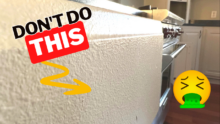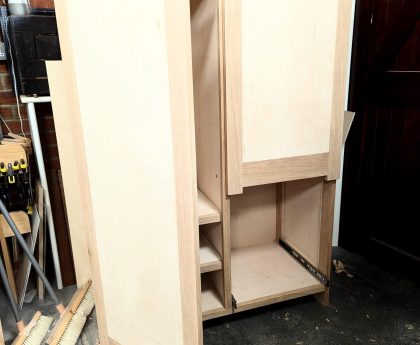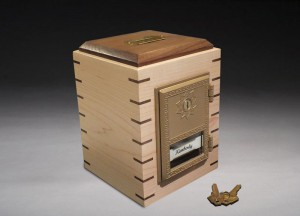There’s no more hotly debated topic in DIY circles than painting wood cabinets. I learned that the hard way when I posted a Kitchen Cabinet Painting video a couple years ago. Regardless of how you personally feel about the topic, you might one day be confronted with the challenge of fixing a bad kitchen paint job, either in your own home or someone else’s. The problem with the DIY painting trend is that a lot of people don’t actually know how to paint or what tools to use, resulting in orange peel, drips, and uneven layers. I’m no professional painter but I do have enough knowledge and tools to improve a bad paint job, and that’s what we did in this video. Hopefully, this will help you if you have to fix a BAD Kitchen Cabinet Paint Job.
Step 1 – Remove the doors, drawers, and hardware. You can’t expect to lay down an even finish if you have to navigate around obstacles. So take the time to remove everything you can. It’s a good idea to label the parts using some masking tape and a marker so you can keep track of them and make sure each door and drawer returns to its original location.
Step 2 – Smooth the problem areas. If you were to apply new paint over an old paint job with no surface prep, the rough surface will just telegraph through the finish and you’ll be no better off. Furthermore, there’s likely oil and grease on the cabinets that should be removed for the sake of getting a good bond with the new paint. You can alleviate both issues by simply sanding the surface. You don’t necessarily need to sand back to bare wood though you certainly could. As long as we level the surface and even out the flawed areas, the new paint should lay down smooth. Of course, you’ll want to remove any sanding dust with a vacuum.
Step 3 – An important part of getting a smooth and seamless look with a kitchen paint job is caulking. The gaps that exist between cabinets and trim will stick out like an eyesore, especially with white and other light-colored paints. So take your time to caulk any gaps you see and let it dry completely before moving on to the painting step.
Step 4 – Apply new high-quality paint. On the face frames, I find it easiest to use a good-quality brush. Spraying always gives me better results but I’m usually not prepared for all of the masking required to spray in an existing kitchen. If there are any large surfaces that need painting like a cabinet side, a smooth roller is a good option. For the doors and drawers, spraying is the way to go if possible. These days you can pick up an inexpensive turbine sprayer that will get the job done for about $130. Or step up a bit to this model: Earlex 5700. Or step up even more to my favorite brand, Fuji. You might have to dilute the paint to get the right viscosity but it’s worth the effort. Apply as many coats as you need in order to get a nice even and consistent color and sheen.
The difference in surface quality is night and day when you use the correct materials and methods. Ideally, no one should notice the paint job. They should see the cabinets and admire them, but if they ‘notice’ the paint job, something is wrong. So hopefully this helps you fix a bad paint job if you ever need to.
Easy links to products I reference in the video:




